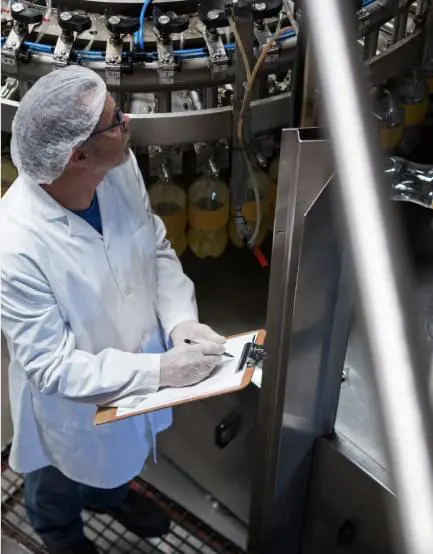$1 BILLION GREENFIELD PLASMA FRACTIONATION FACILITY.
SUPERSTAR START-UP!
In our journey with HBW, we have been reminded of how many friends we have in this business. This is what happened when one of our good friends gave us a call to involve us in the commissioning of a greenfield blood plasma fractionation facility. Thank you to all of our friends who choose to use HBW on your projects!
HBW was tasked to lead the CIP and COP startup, qualification, cycle development, and validation for the IG portion of the facility. This involved running a team of 15-20 engineers and start-up techs on a 24/7 schedule. The team was a blend of client employees, independent contractors, and HBW employees.

When we start up new equipment, we have a process that is followed to make sure we provide the best work outcomes possible:
Functionality review of the equipment and its operation. This includes a thorough review of the P&ID’s, along with a dissection of the functional design specifications and functional requirements to provide a good understanding of design intent.
Perform an operational assessment prior to turning on any machinery. This assessment should include things as simple as knowing where the E-stops are on the equipment all the way to knowing specific equipment limitations. Operational safety is a must both for your colleagues and equipment.
A qualification document that not only challenges the operation, but also alarm functionality must be utilized. This document must prove out that critical process parameters have not only been met, but that the operation of the equipment will meet the requirements of validation. The client of the start-up/commissioning team is the validation team. Our job is to make theirs easy.
Item No.
CIP Cycle Development Testing
Acceptance Criteria
Results
5.2
Record the minimum and maximum wash conductivity values.
Record minimum and maximum solution conductivity.
Min: ________________ mS/cm
Max: ________________mS/cm
Item No.
CIP Cycle Development Testing
Acceptance Criteria
Results
6.1
Ensure circuit rinse time will remove the bulk of the alkaline residuals.
Record the time into drain modes when the return conductivity reaches the following value.
CIPR AIT= 15μS/cm after _______ seconds

Excerpt from CIP Cycle
Development Document
Team training is key when the start-up group is made up of people with different types and levels of experience. We provide a start-up philosophy that outlines critical equipment design parameters and the background behind why they are important. We maintain good team structures with experienced process leads responsible for teams below them. The process leads have the responsibility to make sure that their teams are maintaining their work to the standards set in the start-up philosophy.
Cycle Development Logistics
The CIP Philosophy document is a guidance document for setting up CIP operations to ensure alignment across all CIP operations.
1.1.1. Flow Rate
Flowrates will be established which ensure complete flooding of process piping and effective cleaning/rinsing of process equipment. If applicable, historical flowrates will be utilized.
For process vessels that utilize spray devices, the flowrates established by spray coverage tests or the most recent OQ validation will be utilized to ensure complete spray coverage of the interior surfaces of the vessel is achieved. For circuits that contain multiple spray devices within a single toggling path, the flow requirements for all spray devices within the path are added together to calculate a total flowrate.
For piping, where flowrate modifications are required, a velocity of 5 ft./sec. is targeted to ensure fill of vertical down pipes, sweep gas pockets from vertical tees, or to clean dead legs. At a minimum, flow rates that achieve a Reynolds number within the turbulent flow regime (Re > 20,000) will be utilized to ensure effective cleaning. A guideline of the flowrates necessary to achieve velocity of 5 ft./sec are summarized in the tables below.
1.1.2. Temperature
To ensure cleaning efficacy, chemical wash temperature setpoints will be chosen based on the following criteria:
EXCERPT FROM A CIP START-UP PHILOSOPHY DOCUMENT
Other Notes:
-
1. $200 MILLION EXPANSION OF AN API FACILITY.
EXPANDING ROLES! -
3. TURNING UREA TANKERS INTO CONSTANT STIR TANKS.
WHAT A NOVEL CONCEPT! -
4. HBW SOLVES A TRICKY ENGINEERING PROBLEM IN THE DAIRY.
THE ART OF HYDRAULICS! -
5. INTEGRATING PROCESS AND AUTOMATION DESIGN.
A RETROFIT FOR THE AGES! -
6. SOLVING SYSTEM CONTAMINATIONS.
IT’S THE LITTLE THINGS! -
7. TURNING OUR EYES TOWARD THE ENERGY SECTOR IN
AUTOMATION. READY, SET, LAUNCH! -
8. USING OUR TALENTS TO TEACH THE NEXT GENERATION.
TRAINING TOMORROW!
